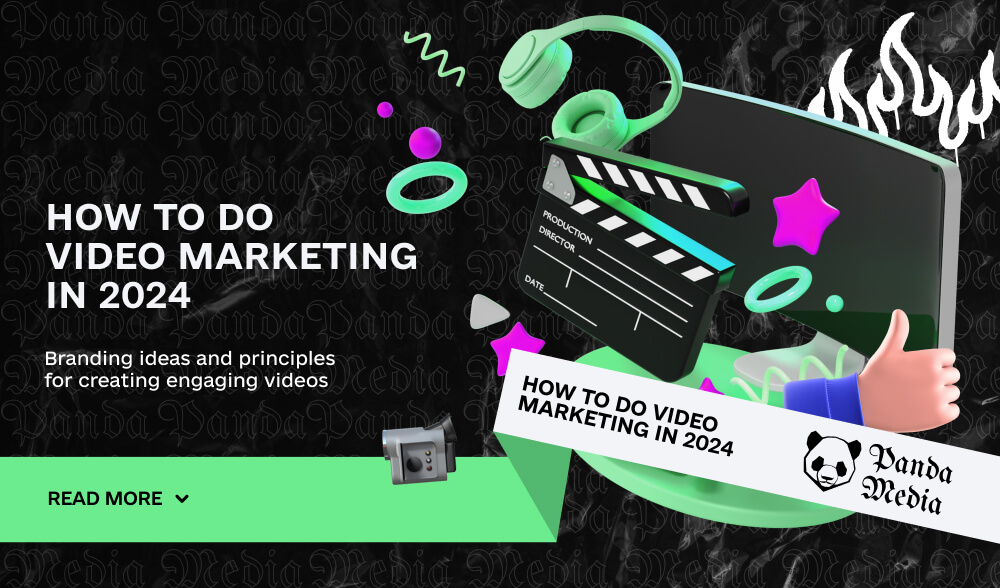Don't miss interesting news

Over the past decade, video marketing has become a separate channel in the marketing industry and has gained importance in advertising and marketing campaigns. One of the important factors behind this growth is consumer behavior. Thanks to the rapid development of smartphone technology and Internet speed, video has become more accessible and convenient for netizens.
In today’s dynamic digital environment, where short attention spans and information overload have become the norm, companies and marketers need to constantly look for new and creative ways to stand out from the competition and attract customers.
In digital marketing, video is one of the key tools that stands out for its effectiveness among numerous methods. The video has a special ability to engage, educate, and entertain, making it indispensable compared to other communication methods due to its dynamic and engaging properties.
Becoming an indispensable element for companies looking to make a lasting impression on their target audience, video captivates with its engaging stories and eye-catching images.
Regardless of your experience in marketing or your level of interest as an entrepreneur, we aim to provide in-depth analysis and practical advice to help you maximize the potential of video in your digital marketing strategy.

Short videos have become a key element of online interactions in today’s fast-paced digital environment, where attention spans are shrinking and the need for easily consumable content is growing. Thanks to their visually appealing and concise content, platforms like Instagram Reels and TikTok have grown impressively and captured the attention of audiences.
But why are short videos so successful, and how can marketers leverage this trend to engage viewers and increase sales?
The rapid development of short videos can be mainly attributed to the change in internet consumption habits. In an age when people are constantly overloaded with information and entertainment, interesting and engaging content is becoming increasingly important. To meet these needs, short videos offer content in a concise, easily digestible format that makes it easy for viewers to consume, enjoy, and share content.
Short videos are gaining popularity, providing marketers with a unique opportunity to engage and communicate directly with customers. Short-form video platforms allow brands to showcase their products or services, create engaging stories, and quickly build brand awareness. In a competitive digital environment, companies can stand out by using storytelling to attract and retain potential customers.

In today’s ever-changing digital world, with the advancement of technology and changing consumer preferences, consumer expectations are constantly evolving. Brands need to adapt to technological advancements to meet the growing demands of consumers for in-depth, immersive experiences that engage them on a deeper level. This transformation has spurred the emergence of engaging and interactive video experiences, fundamentally changing the way companies interact with their target audiences.
In this in-depth analysis, we’ll explore the different formats of interactive video, their benefits for brands, and real-world examples of effective use. We’ll also discuss the importance of personalized video content and how data-driven methods can improve consumer relationships.
Exploring video formats
Many different formats in the field of interactive video allow viewers to interact with content, blurring the lines between the virtual and real world. The most common ones are as follows:
Virtual reality (VR)
Virtual reality technology provides a fully immersive, multi-sensory experience by transporting users into virtual environments. Virtual reality can be used by brands to create immersive storytelling, interactive simulations, and virtual tours that engage consumers and leave a lasting impression.
Augmented reality (AR)
Augmented reality is the overlaying of digital objects in the physical world to enhance the user’s environment with interactive digital content. AR provides marketers with the ability to create immersive and dynamic experiences that combine online and offline interactions, from virtual fitting rooms to interactive product demonstrations.
Gamification
Gamification is the process of incorporating game elements into marketing campaigns to drive engagement and encourage desired behaviors. Gamified experiences engage audiences and encourage active participation. They promote a sense of fun and achievement through interactive quizzes, challenges, and prizes.

In today’s digital age, live streaming has become a powerful marketing tool for companies looking to build closer relationships with their audiences, as instant interaction and authenticity are valued more than ever before. Live streaming allows brands to interact with viewers in real-time, promoting authenticity and developing deep connections. It’s useful for everything from product launches to behind-the-scenes videos.
There are important conclusions to be drawn from the discussed video marketing concepts and trends for 2024. They emphasize how the digital marketing landscape is changing and how important video content is becoming for brands’ expansion plans.
First, the way brands engage with their audiences has changed dramatically with the advent of immersive and interactive video experiences. Brands are using short videos and new forms of interactivity to engage consumers, reaching them in a personalized way. By engaging with video content, brands increase consumer loyalty, strengthen relationships with their audience, and gain valuable data.
Secondly, personalized video content has become a key tool for customer engagement. Brands can provide personalized video content that resonates with a large number of visitors and increases engagement and conversion by using data-driven approaches. Brands can create a more personal connection with their audience through personalized video content, which fosters brand loyalty and commitment. This is possible through interactive elements or targeted messages.